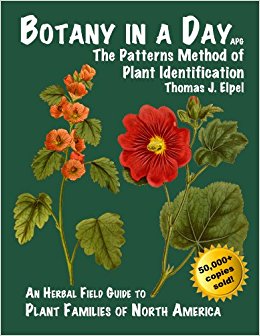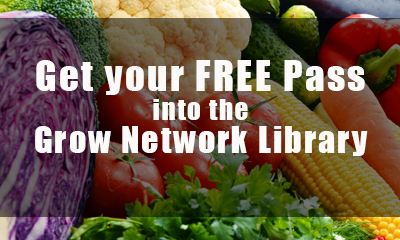Would you like to be able to quickly and easily identify plants?
Even be able to recognize species while driving 60 m.p..h. down the highway?
Marjory Wildcraft discusses Tom Elpels classic book Botany In A Day. Botany is the most crucial skill for sustainable living—everything we need ultimately comes from the plant kingdom: Our food, medicine, shelter, clothing, heating, and so much more.
In this video, you’ll learn:
- How related plants have similar characteristics
- Identifying plants in the Mustard Family … and they are all edible!
- How family patterns can teach you a lot about plants
- Get a grasp on the seven plant families
Get Tom’s book, Botany In A Day by clicking here.
When you want to identify a plant, ask yourself these questions:
- Is this a hazardous plant?
- General question: Is this a flower, tree, succulent, shrub, or grass?
- Is it a monocot or dicot?
- How are the leaves arranged?
- Are the leaves simple or compound?
- What is the shape of the leaf?
- What other leaf characteristics do you see?
- What do the flowers look like? (shape, color, florets, petals, sepals, pedicel, stamen, etc)
- What does the stem look like?
- What type of root system does the plant have?
If you would like more information about plant identification, check out this publication.
 Access our growing selection of Downloadable eBooks…
Access our growing selection of Downloadable eBooks…
… On topics that include growing your own food, herbal medicine, homesteading, raising livestock, and more!
Sign up for your free pass here!










COMMENTS(7)
I have Tom’s book, and while I don’t use it regularly, I too am a serious Wild Edible student. Knowing what family a plant is in is not going to tell you how good it tastes. If you are a serious student of Botany, than Tom’s book is really fantastic.
But, if you want to learn about Wild Edibles, the best place to learn about them is on YouTube. They have the specific plants, how they are used, how they actually look in the field. I have Sam Thayer’s excellent books and use them as well.
The thing about Wild Edibles, is that it is a language, and like any language, there are only a certain number of “words” (wild edibles) that must be memorized to make one reasonably competent(to BEGIN) . And while there are 1,000s of plants within one family (for example the Mustard family), the reality is that there are only a few that are usually used within a given region.
And, if you have ever learned another language (I have–English), you know that the most important ingredient is “immersion.” This means getting all your senses involved in the learning aspect. This means sight, sound, smell and taste. This is the fastest way to learn a language, and the fastest way to learn edible plants as well.
So, this means watching Youtube videos, studying books and going to places where people are into Wild Edibles. Almost every state has someone that is involved in giving Wild Edible classes.
And, there are instructors in almost every state that give wild plant tours and seminars. Unfortunately each state has varying degrees of wild edible activity, and with the most populous states having the highest level of activity. California, Oregon, Washington, New York, Massachusetts, New Jersey–and Texas–are a few of the with the highest concentration of Primitive Skills and Wild Edible activity.
But you can contact your local Dept of Conservation for contacts. I live in MO, and went through our MO Dept of Conservation, and found a group of volunteer naturalists called the “Wild Ones.” They are retired women with a passion of keeping the tradition of Wild Edibles alive that was taught to them by their rural grand parents. Prior to WWII, every rural dweller had some knowledge of wild edibles because they used them on a daily basis–when in season. Sadly this “common knowledge” has been lost to most because it was considered something that “only poor folks” took advantage of.
Those of us with an interest are blessed with wonderful and passionate men and women that want to bring back these lost traditions. If you are sincere in the study of Wild Edibles, there are now many avenues in different states to give you the knowledge (the SKILL is something YOU have to supply by practice) that you seek. The price is time and commitment–something in very short supply in our ever more superficial American society.
One thing you will find out very quickly is early skills were just that –a skill. It is not the same thing as knowledge. Knowledge and still are completely different. Most people do not understand that. We live in an artificial world. First you must have knowledge, THEN one develops skill. Just knowing something and about something is not enough in developing skill.
98% of Preppers make this mistake. In the prepping community, everyone is only too ready to “buy stuff,” thinking they can put it in the basement and when the time arrives that they will be able to use it.
Completely false assumption. Survival skills are SKILLS. You cannot learn a SKILL by reading a book any more than you can learn Tennis or Archery by reading a book. You have to go out and practice–make mistakes–then practice some more. The preppers that I know of in my area are long on purchasing books and junk and very short on practice.
Now once you develop some minimal skills in Wild Edibles, Tom’s book will refine and increase your knowledge to the point where you become very knowledgeable about Botany–and, it will enhance and affect every other aspect of your life.
Thank you so much for this interview Marjory! Although I am a gardener too, the thing I am most interested in is wild edible plants and medicines. Anyone who realizes how important food self-sufficiency is has to add wild edible plant identification to their skill set. Thank you for this great interview and also mentioning Tom’s children’s book Shanleya’s Quest in your email. I’ve just found it on Amazon and I’m ordering it now! And I don’t even have kids 😉
You’ve got inner kids! LOL. Seriously, I learn best from kids materials.
You would be interested in Ruth Goodman, a domestic historian and re-en actor. She used soapwort to was her hair in in “Wartime Farm” and does not use detergent in her washing machine.
http://historic-crafts.blogspot.com/2011/08/portrait-of-craft-historian.html
I could not post this comment on the appropriate post.
Hi G! thanks for that article.
From what I read ruth doesn’t use soap at all in her washing machine for clothes. Water is good enough for 99% of washes. That sounds about right to me. We only use a small fraction of whatever is recommended because we have our water on a gray water system. I’ll have to experiment with using nothing.
Wow, fantastic weblog structure! How long have you been blogging for?
you make running a blog glance easy. The overall look of your website
is fantastic, as well as the content!